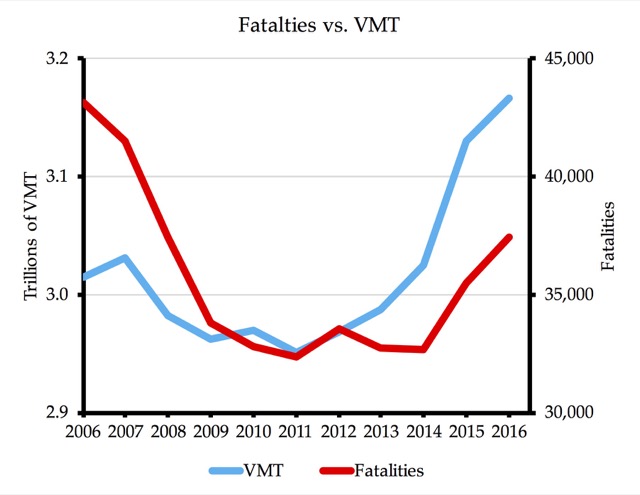Transit fatality rates have risen from 4.6 per billion passenger miles carried in 2002 to 5.8 per billion in 2016. Among major forms of transit, hybrid rail (diesel-powered rail cars that often run on light-rail schedules) is the most dangerous, killing 29 people per billion passenger miles. Light rail is next at 13, while buses and heavy rail are both less than 5.
These numbers are from the Federal Transit Administration’s safety and security time series, which counts fatalities and injuries by mode. The FTA’s spreadsheet also includes fatality numbers for 2017 and January of 2018, but does not have passenger miles for those years, so we can’t calculate rates. I’ve summarized the data in a spreadsheet showing fatalities and passenger miles by mode and year.
Commuter rail is not included on the FTA spreadsheet as that is governed by the Federal Railroad Administration. You can find commuter rail fatality numbers in table 2-34 of National Transportation Statistics. Comparing these fatalities with passenger miles reported by the National Transit Database historic time series indicates an average commuter-rail fatality rate of about 8.8 per billion passenger miles. Continue reading








